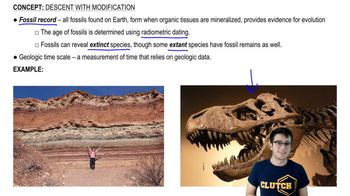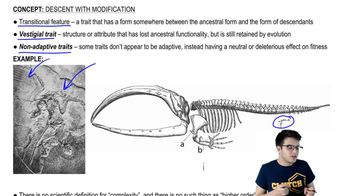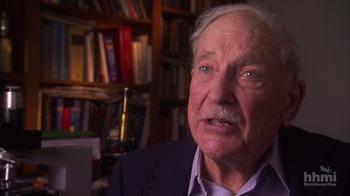Hi. In this video, we are going to talk about evolution. Yes. We have finally made it to the moment where we're going to scratch beneath the surface and get at what is evolution. So, evolution, in the simplest sense, is just the change in a phenotype in a biological population over time, or just change over time, in the simplest form. Now, evolution actually is a very old idea and it kind of predates Charlie Darwin. So the first guy who's really credited with coming up with a theory of evolution was called Lamarck, and his ideas are referred to as Lamarckism. And this is that an organism passes on traits to its offspring that it acquired during its own lifetime. And he believed that whether an organism used or didn't use a particular body part that would cause that body part to be strengthened or weakened, and this would affect some change in the organism's phenotype. So his example that he used was that of a giraffe. And he said that, you know, giraffes they're, you know, they started out, they didn't have these really long necks, so they kept stretching their neck to eat those leaves. And so over time, they grew to have longer and longer necks because they were strengthening that body part. They're stretching those necks out. And during the course of one giraffe's life, it would stretch its neck a little bit, causing it to grow a little longer, a little stronger. And it would pass that on to its offspring, who would then stretch its neck a little bit during its life, and so on and so forth, until you get the long neck giraffes we know today. Now, of course, that is not how evolution works. For one thing, use and disuse doesn't strengthen or weaken body parts like that. It doesn't work that way. Evolution is much better thought of as the way Darwin put it, this descent with modification. So Darwin's ideas about evolution are such that individuals in a population have different traits. Right? They have different alleles for different things so they have different traits. And some of these traits, some of these trait differences rather can be inherited. And every generation, only some individuals are going to survive until they can reproduce, and some will reproduce more than others. And additionally, some individuals survive better and produce more offspring because of certain heritable traits or traits that can be inherited. So, basically, if we look at this giraffe example, what Darwin would say is, alright so, early on you have some giraffes with shorter necks like we see here, you got giraffes with longer necks, and well, those giraffes with shorter necks, but they're going to die. They're going to die out because because they are not going to survive as long or produce as much offspring as the giraffes with the longer necks. So those giraffes with longer necks are gonna be more successful and over time, they're going to become the most prevalent member of their population and these short neck giraffes are gonna keep dying off. And Darwin called this process this process by which, heritable traits become more or less common in a population because of differences in reproductive success between the individuals who have those traits, he called this idea natural selection. So essentially, the, giraffes with long necks were naturally selected and became more common in the population. That trait of long neck became more common, because it allowed the giraffes to get more food, which would allow them to survive better, which would allow them to produce more offspring. So this differs very much so from Lamarck's idea. Right? These changes are not as direct. They're not as immediate. The whole process is a lot more passive in a sense.
Now, let's turn the page and talk about some more specifics about evolution.































